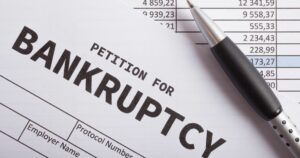Insolvency and bankruptcy are often confused. While both apply to a business struggling to pay its obligations, each has different processes and outcomes.
What is Insolvency?
Insolvency is considered a financial status. It means that a business cannot promptly pay its obligations. According to the Internal Revenue Service (IRS), a business is insolvent when the total debt due is more than the company’s fair market value. The company’s fair market value includes any company-owned assets, such as vehicles, materials, property, stocks, bonds, and accounts receivable.
A business insolvency falls into one of two main categories:
- Cash Flow Insolvency – A cash flow insolvency occurs when a business cannot pay debt obligations on time because the company has poor cash flow.
- Balance Sheet Insolvency – A balance sheet insolvency occurs when a business has a negative balance sheet or negative assets.
A company can be cash flow insolvent, but not balance sheet insolvent. This occurs when a company has more assets than debt obligations, but does not have any cash reserves to pay its debt. Conversely, a business could be cash flow solvent, but balance sheet insolvent. This occurs when there is adequate cash flow for immediate obligations, but total liabilities exceed assets – leaving a negative balance sheet.
Understanding the Differences Between Insolvency and Bankruptcy Status
Insolvency means your company is in financial distress. Bankruptcy is a court determination that decides which obligations are paid and how. You could be insolvent without your business being bankrupt. Sometimes, insolvency is a temporary condition, while other times it is easily corrected by liquidating certain business-related assets. Insolvency can, however, lead to bankruptcy if you are unable to meet your debt obligations.
If your business is insolvent, you may still have options, such as selling assets; cutting expenses to preserve reserves; borrowing funds; renegotiating debt obligations; or engaging in an acquisition with a larger, more stable company.
The court may deem your business “insolvent” through an insolvency order. You will need to file this request through a business attorney. Doing so could offer you protections against creditors as part of a bankruptcy application. Your creditors might already be demanding an insolvency order. Creditors might make such a demand if you are dramatically behind on your debts and the creditors believe assets should be liquidated.
If your business is struggling, you may want to explore the options of insolvency orders or bankruptcy. If a creditor is requiring an insolvency to force you into paying off debts, a bankruptcy filing could help you resolve outstanding debt without liquidating your entire business. We can help. Contact us for a no-obligation consultation today.

